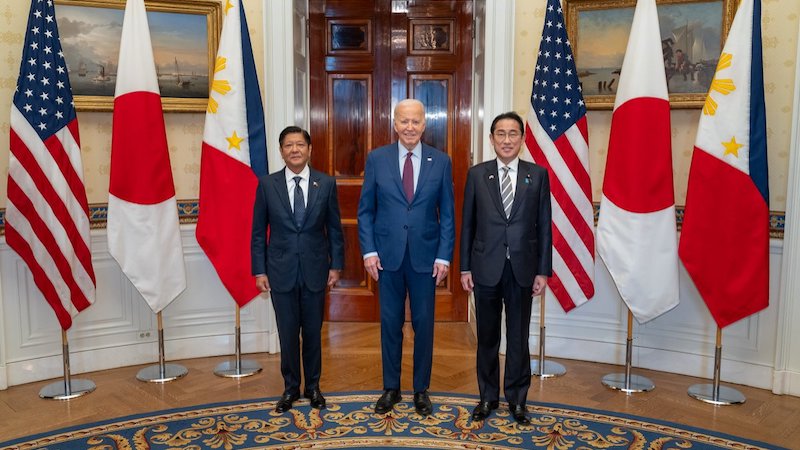The Luzon Economic Corridor As The United States’ Southeast Asian Litmus Test – Analysis

By Alvin Camba and Ryan Seay
At their April 2023 trilateral summit, the presidents of the Philippines, Japan and the United States jointly unveiled the ambitious Luzon Economic Corridor (LEC) initiative. This unprecedented undertaking could channel a staggering US$100 billion into the Philippine economy within ten years, a transformative sum for the country.
The LEC is a crucialcomponentof the United States’ global infrastructure strategy and a pivotal test case for US commitment to Southeast Asia — one that will either revive the region’s dwindling trust in Washington or erode US credibility.
The LEC has the potential to dramatically strengthen and expand US economic influence in Southeast Asia. While USAIDhas requesteda US$1.2 billion budget for Southeast Asia in 2024, a slight increase from previous years, foreign aid to the region has lacked for decades due to a lack of bipartisan support. This includes investment in the Philippines, which was only allocatedUS$594 millionfor various development programs between 2019 and 2024.
These programs provide some assistance but lack the necessary speed and scale to adequately address regional economic challenges —a gapthat China is eager to fill. The lack ofdirect impacton poverty reduction and job creation has led Southeast Asian governments to increasingly seek out Chinese financing for large-scale infrastructure projects and strategic investments. This Chinese financing empowers these governments to consolidate theirpolitical powerandbolstertheir legitimacy with their constituents.
The LEC enables the United States to compete with China project by project and dollar for dollar. The initialLEC projectsinclude the US$868 million Subic-Clark railway, a US$174 million expansion of the Clark International Airport and a US$152 million agricultural initiative. The corridor could also incentivise US battery and manufacturing firms to access the Philippines’abundantmineral resources, like nickel, cobalt, copper and bauxite, offering tax incentives toencouragerelocation. These firms, along with thesemiconductor industry, could generate tens of thousands of jobs and add value to supply networks.
The LEC also offers substantial economic dividends as well as enhanced security safeguards. The project was strategically established inLuzon, which provides stableand securephysical infrastructure like power plants, pipelines and roads to the broader Filipino populace. The LEC’s presence can further bolster the physical and cyber defences of Philippine institutions against potential threats fromChinese actorsor syndicates.
The LEC stands in stark contrast to the Belt and Road Initiative which primarily benefiteddomestic eliteswho backed the Duterte administration. The economic corridor aims to foster connectivity and economic opportunities broadly benefiting both US companies and the Filipino people, irrespective of their alignment with the current Marcos administration. This inclusive approach represents a more constructive model for US engagement in the region.
The LEC is likely to continue post-Marcos barring an unprecedented rupture in US-Philippines ties. Given its potential to create numerous job opportunities for Filipinos, it is highly improbable that even a hypothetical anti-USfuture president, such as Sara Duterte, would seek to undermine or dismantle the LEC. During the previous Duterte presidency, the United Statesbolsteredboth security assistance and investments in the Philippines. Similarly, the US has maintained a commitment to aiding the people of other countries, such asCambodia, despite political tensions with their regimes.
While domestic US political volatility, including the possibility of another Trump presidency, could create turbulence, it is unlikely to significantly impact the LEC initiative. In fact, a Trump administration may perceive the LEC as advantageous, as it could generate Filipino goodwill towards the US,undermineChinese regional influence and garner support from US manufacturing and defence companies.
Should the LEC fail to materialise and provide tangible benefits to Filipinos, it is likely that most Southeast Asians will view this as another instance of the US making promises it ultimately fails to deliver on. China’sdisinformationefforts will seek to further amplify such perceptions.
Excluding the Philippines,most Southeast Asian countrieshave developed a morefavourableview of China. For the Islamic countries in the region, the United States’ staunch support for Israel and the resulting suffering of Palestinians havecontributedto the perception that Washington prioritises Jewish lives over others.
The South China Sea remains a critical foreign policy issue where theUnited Statesholds influence. But many in Southeast Asia perceive US policies as self-serving, believing that supporting Southeast Asia is primarily aimed at weakening China.
The Philippines is the oldest US ally in the region and is often viewed by Southeast Asians as a barometer of the sincerity of US engagement. During the 2012 Scarborough Shoal standoff between the Philippines and China, the US brokered a peaceful settlement. But when the Philippines withdrew,China did not, and the United States failed to step in. This incident was widely perceived in Southeast Asia as an example of US self-interest.
A successful LEC would avert a potential regional-wide debacle and showcase the United States’ genuine dedication to Southeast Asia. For Southeast Asian nations, this represents a valuable opportunity to reap economic benefits without compromising key concerns, such as theSouth China Sea disputes.
About the authors:
- Alvin Camba is Research Advisor on critical materials at the Associated Universities Incorporated and a faculty affiliate in the Climate Policy Lab at the Fletcher School, Tufts University.
- Ryan Seay is a graduate student at the Korbel School of International Studies, University of Denver.
Source: This article was published by East Asia Forum
